It finally happened: we witnessed a truly incredible display of the northern lights. And we didn’t have to go and freeze in the Yukon or Iceland to see it!
I’ve been reading the space weather reports from spaceweather.com on an almost daily basis for many years now, and especially in the run up to the current solar maximum. Each time I visit the website, I eagerly await news of a colossal explosion that would hurl a giant blob of plasma in the direction of the Earth, and fervently hope for a cloudless night in Vancouver to stand a chance of seeing its effects on the atmosphere. Those two events rarely align, and Vancouver is not particularly well-placed to even see the aurora as often as you might think given that there are more southerly places which experience it more often.
But then a huge sunspot exploded – the technical term is a coronal mass ejection or CME – on May 8, and again on May 9 sending giant parcels of charged particles speeding towards the Earth. The blobs from these CMEs merged into larger blobs, and they smashed into the Earth’s magnetic field on May 10, causing a flood of charged particles to be directed to the North and South Poles where they collided with atoms and molecules in the atmosphere. This intense solar storm would last a day or so, peaking on Friday and weakening during Saturday.
Even better, the weather forecast was for completely clear skies. And, in another stroke of good fortune, we found ourselves staying with friends on Vancouver Island, where the amount of light pollution was much less than in Vancouver. I got the camera ready, charged batteries, cleared some space on the memory card, and made sure I packed the tripod before we enjoyed a wonderfully calm ferry ride to the Island.

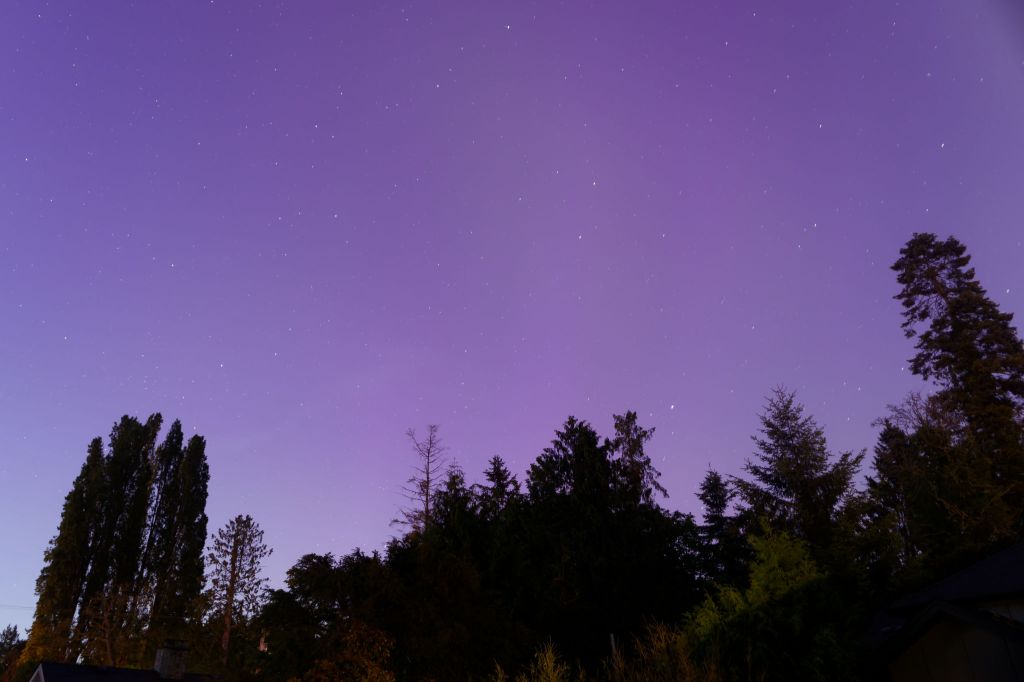
As soon as it was dark, I set up the camera on the back deck, with a clear view to the north that was completely free of photograph-ruining street lights. Maria took up a more comfortable position on the trampoline with our friends’ teenage daughters. I took a couple of test photos during twilight but all I saw was a deep blue sky. Where was the aurora? By 10 pm the sky was dark enough to see stars but there was still no visible aurora. But the camera could see what we could not, and a half-minute exposure revealed a pink glow in the sky. If we squinted we could kind of make out that the sky wasn’t the deep indigo blue of summer nights but there was no hint of any structure such as curtains or filaments.

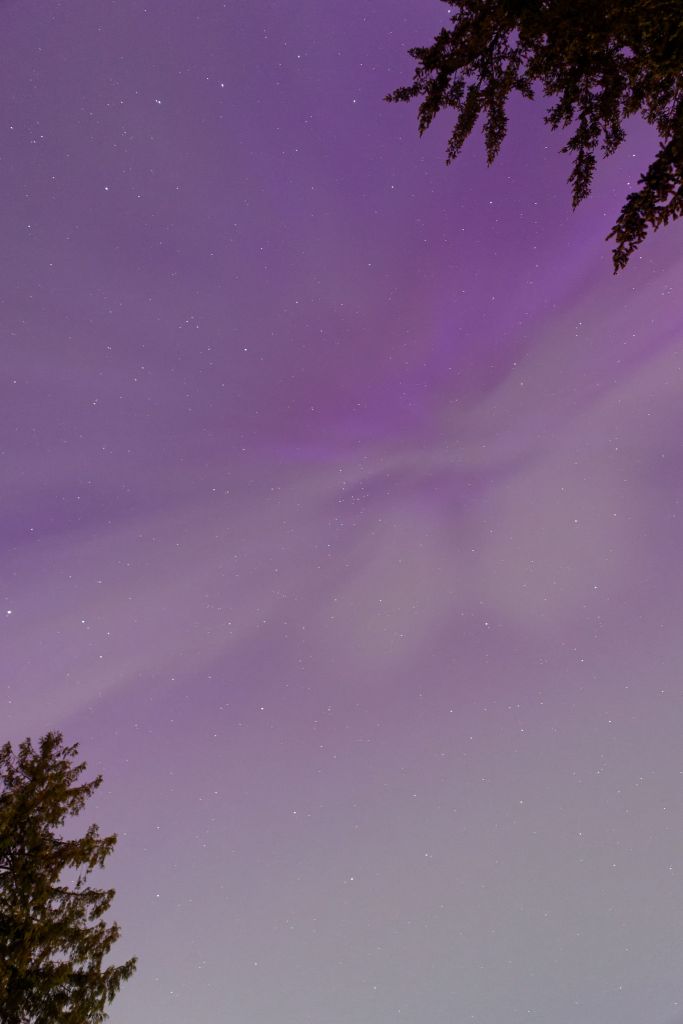


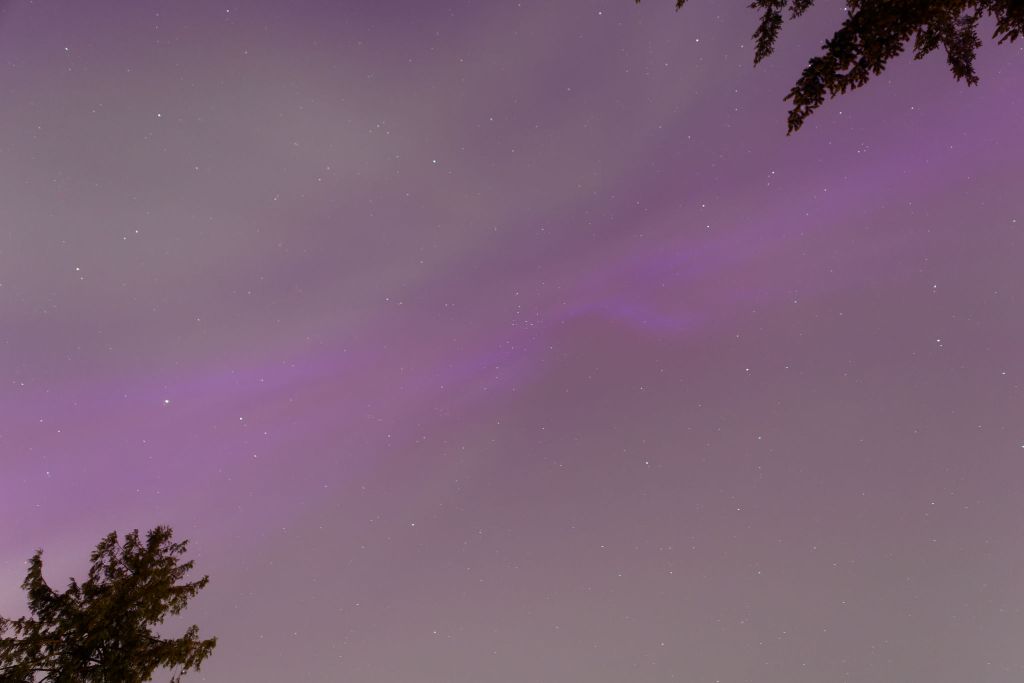
Within only a few minutes the sky changed completely and the real show began. Until now, we’d been looking mostly north expecting to see the aurora on that horizon, based on our experience from previous displays. Then we looked above us and noticed that the sky between the stars wasn’t dark. A faint haze appeared to lie overhead. Could it be wispy cloud? But then the cloud changed shape and streaks appeared. This was no cloud: the aurora was so strong it was directly over our heads!
It was a faint, milky haze to our eyes but the camera showed a rich kaleidoscope of greens, pinks, and purples. Even the night mode on my phone was picking up the display. Over the next half-hour we oohed and aahed and marvelled at what we could see in the sky, and again when viewing the back of the camera. This was an amazing display with more colour than we’d seen in over 20 years.

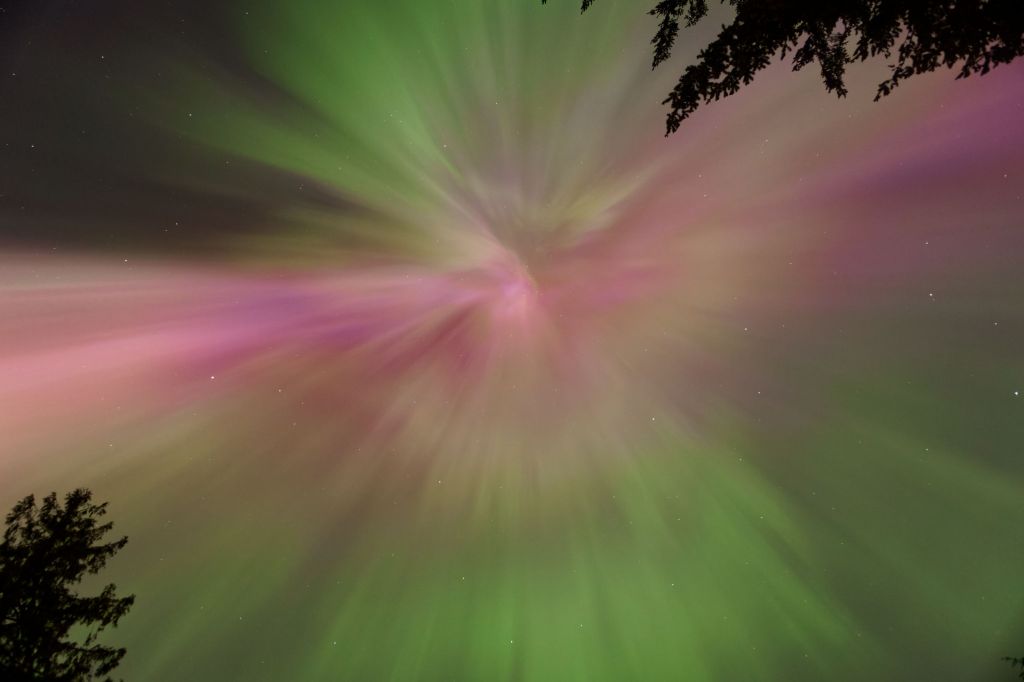

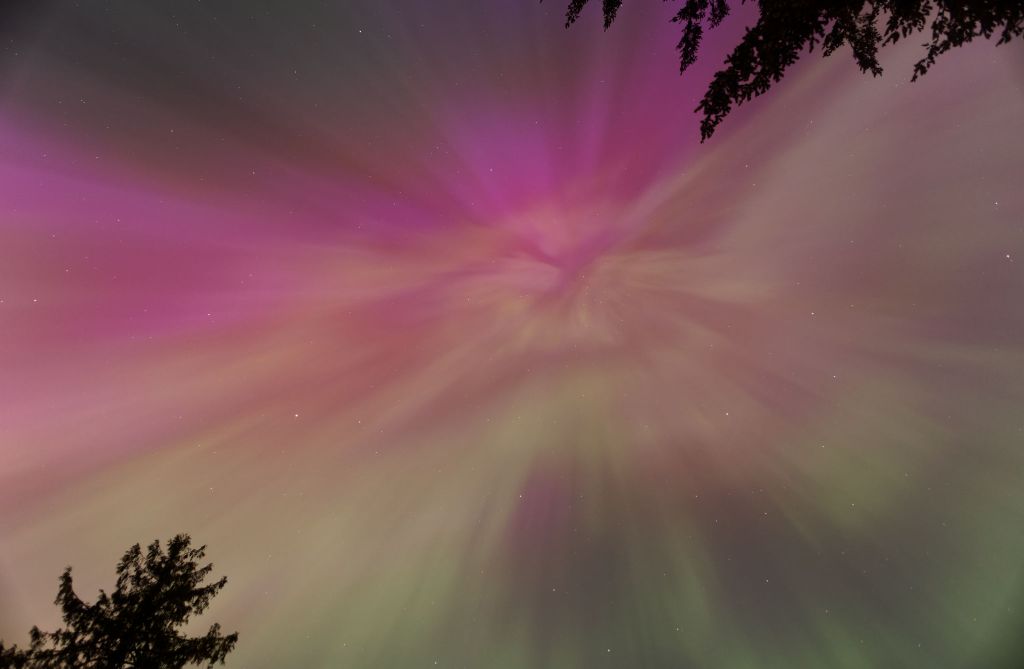
If that was all we’d seen of the aurora that night, we would have gone to bed quite happy. But the storm wasn’t done and the next hour-and-a-half was the most spectacular nocturnal event we’d ever witnessed. To be sure, it only remained faint and mostly free of colour to our eyes – occasionally we could make out pink or red, sometimes green – but mostly we were watching the shape change.



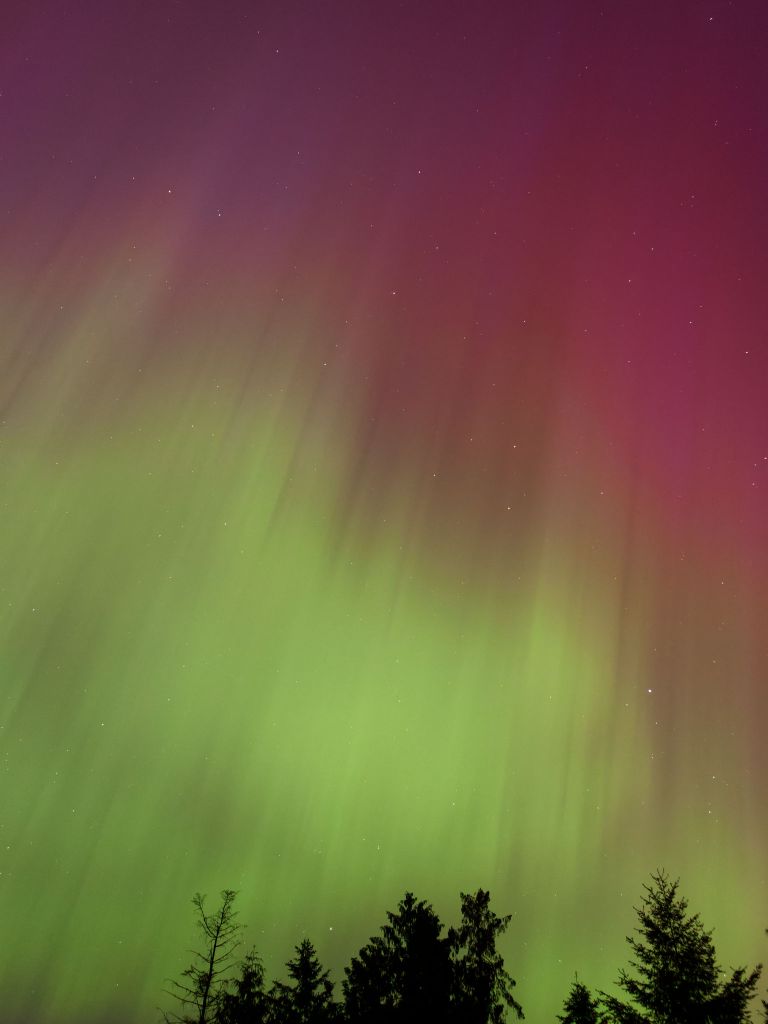
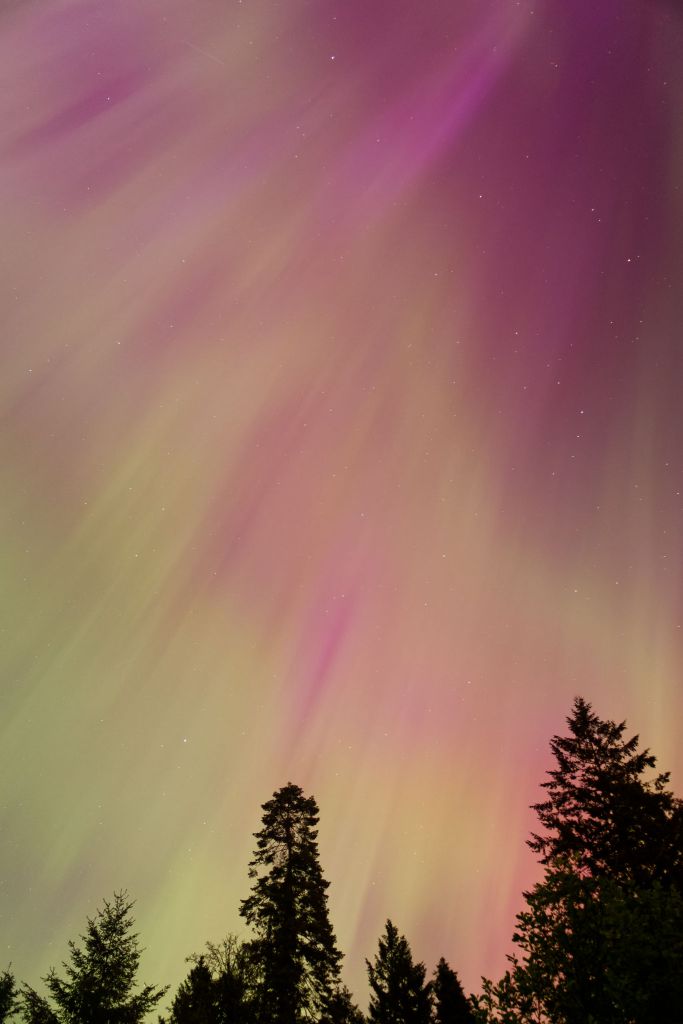
And it was amazing to see how quickly the display changed. Within minutes the images on the back of the camera went from ghostly pale to intense and vivid. Rays and curtains filled the sky all around and above us. There simply wasn’t a wrong direction to point the camera. The familiar constellations of Boötes, Corona Borealis, Leo, Cassiopeia, and Ursa Major were barely discernible through the bright veil of colour.
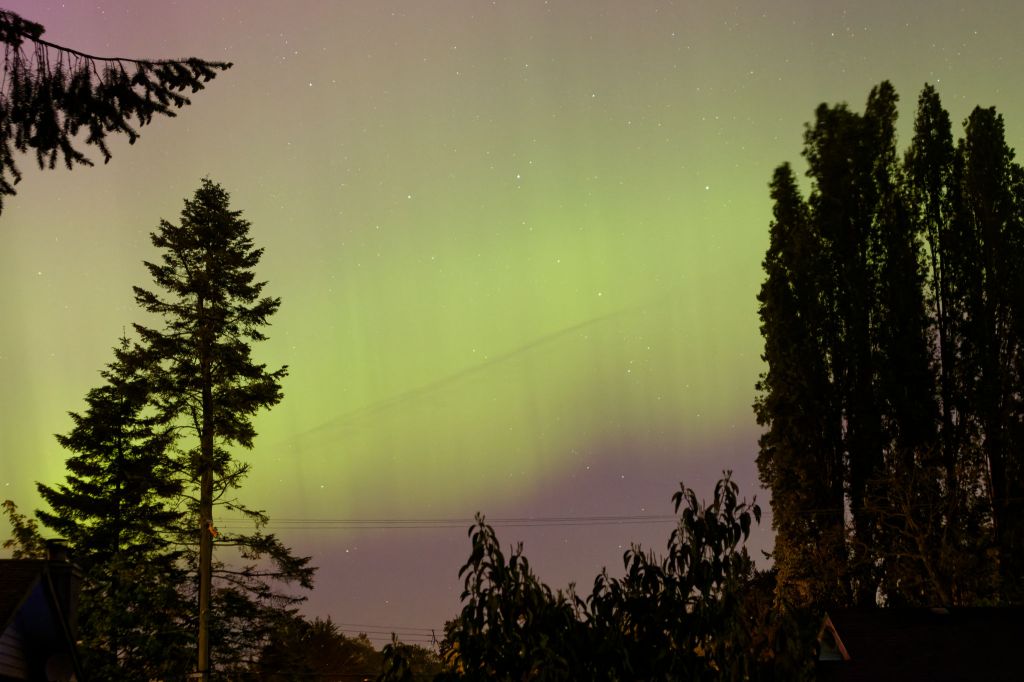
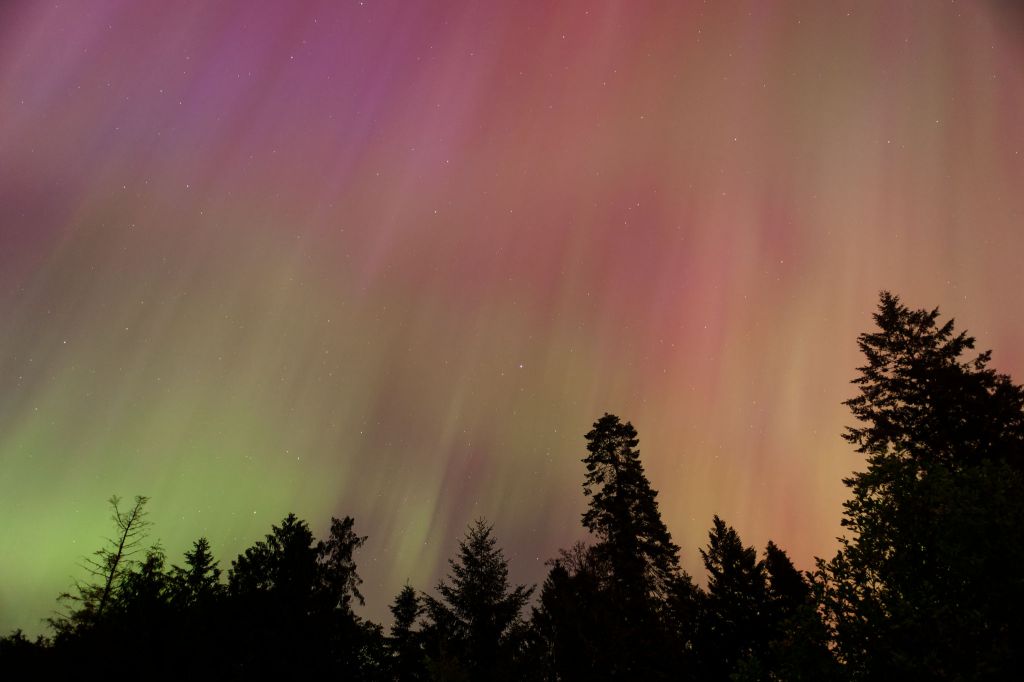
And it only got better. I was in a state of utter awe and scarcely able to believe what I was seeing. My neck was sore from staring straight up at the sky and I couldn’t decide where to point the camera. Mostly I aimed it above us to capture what seemed to be the eye of the storm radiating green curtains tinged first with intense pink and then a beautiful crimson. The gallery below is a collection of photos that I took during this time, spanning a period of about half an hour.
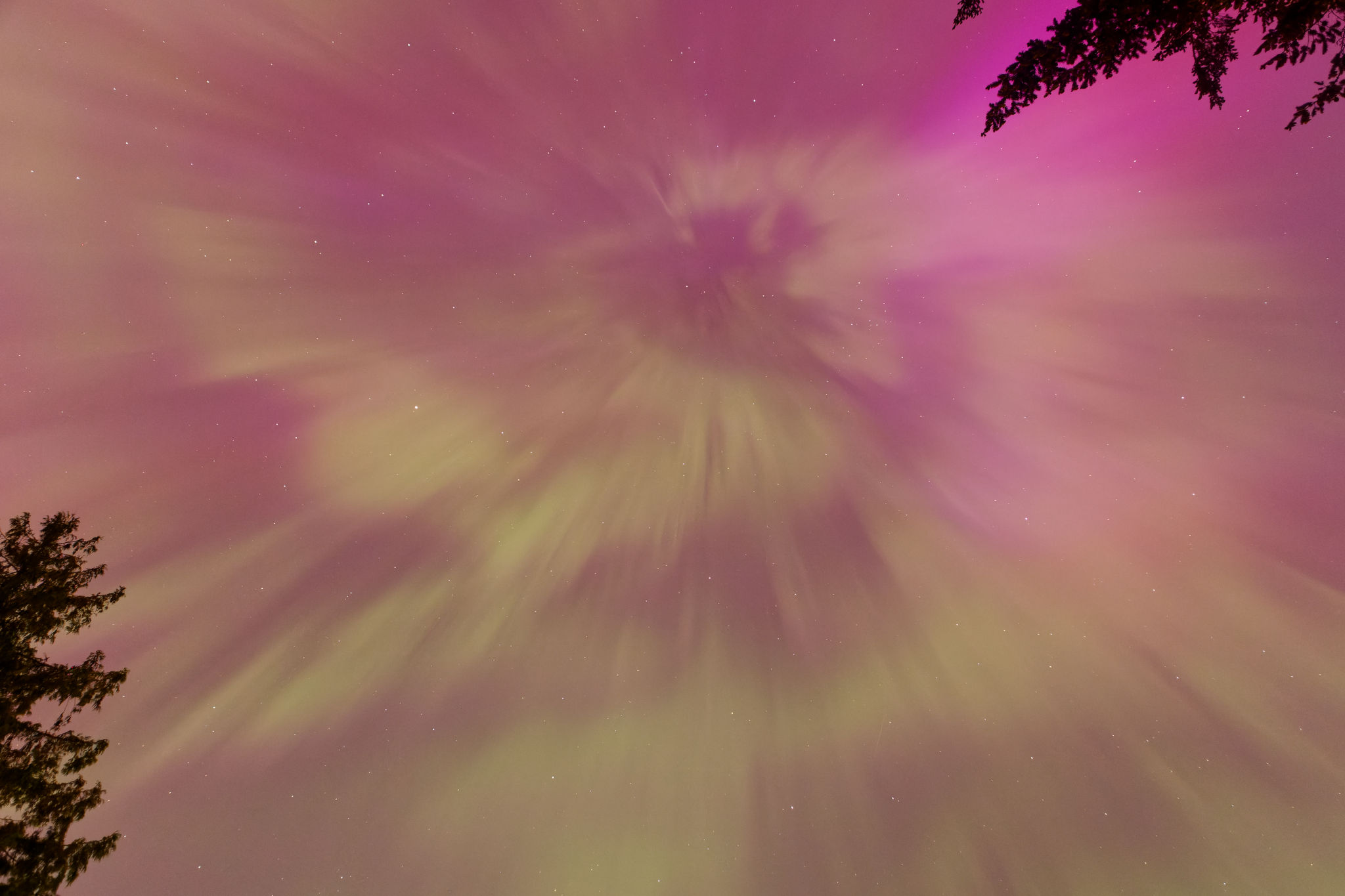

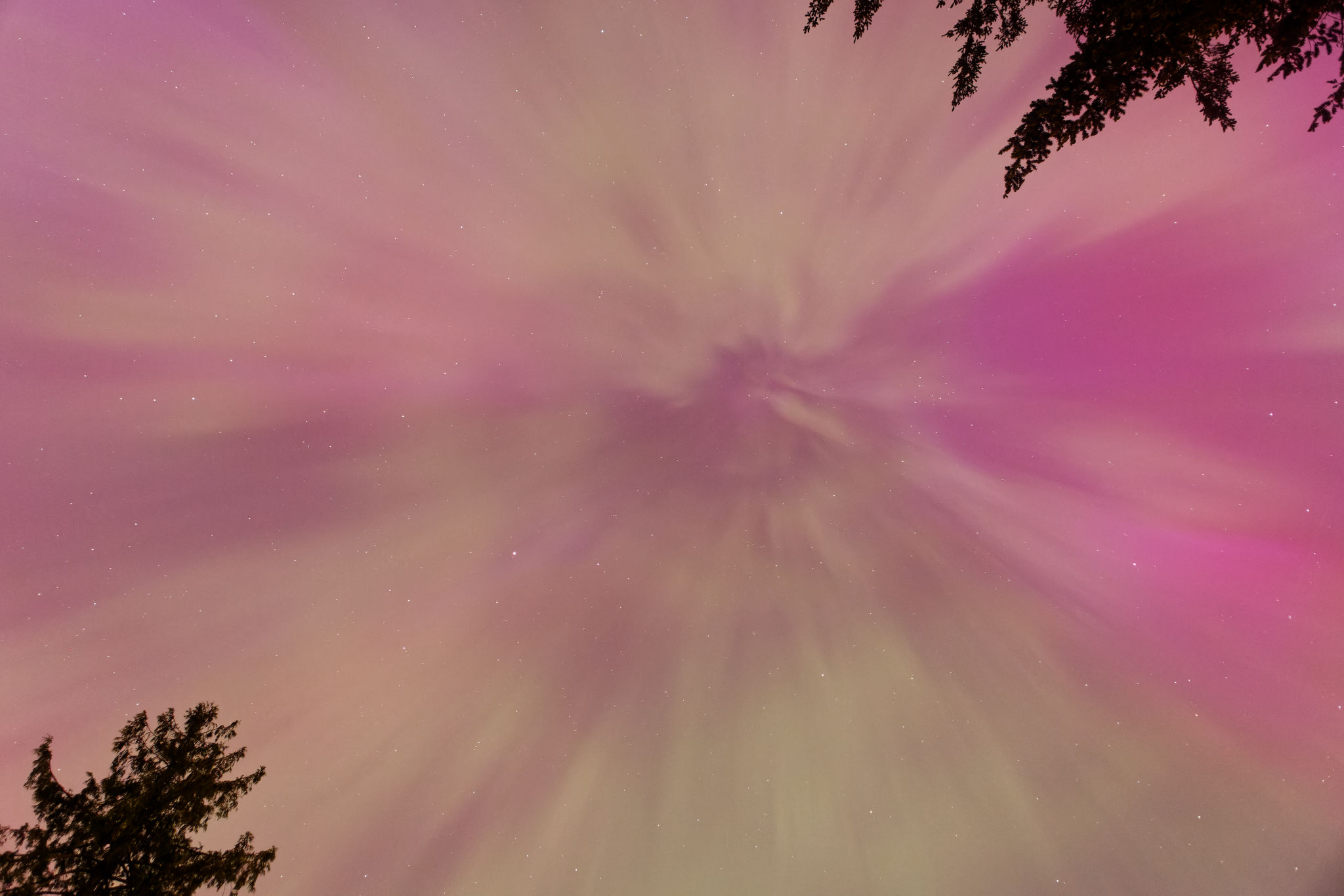
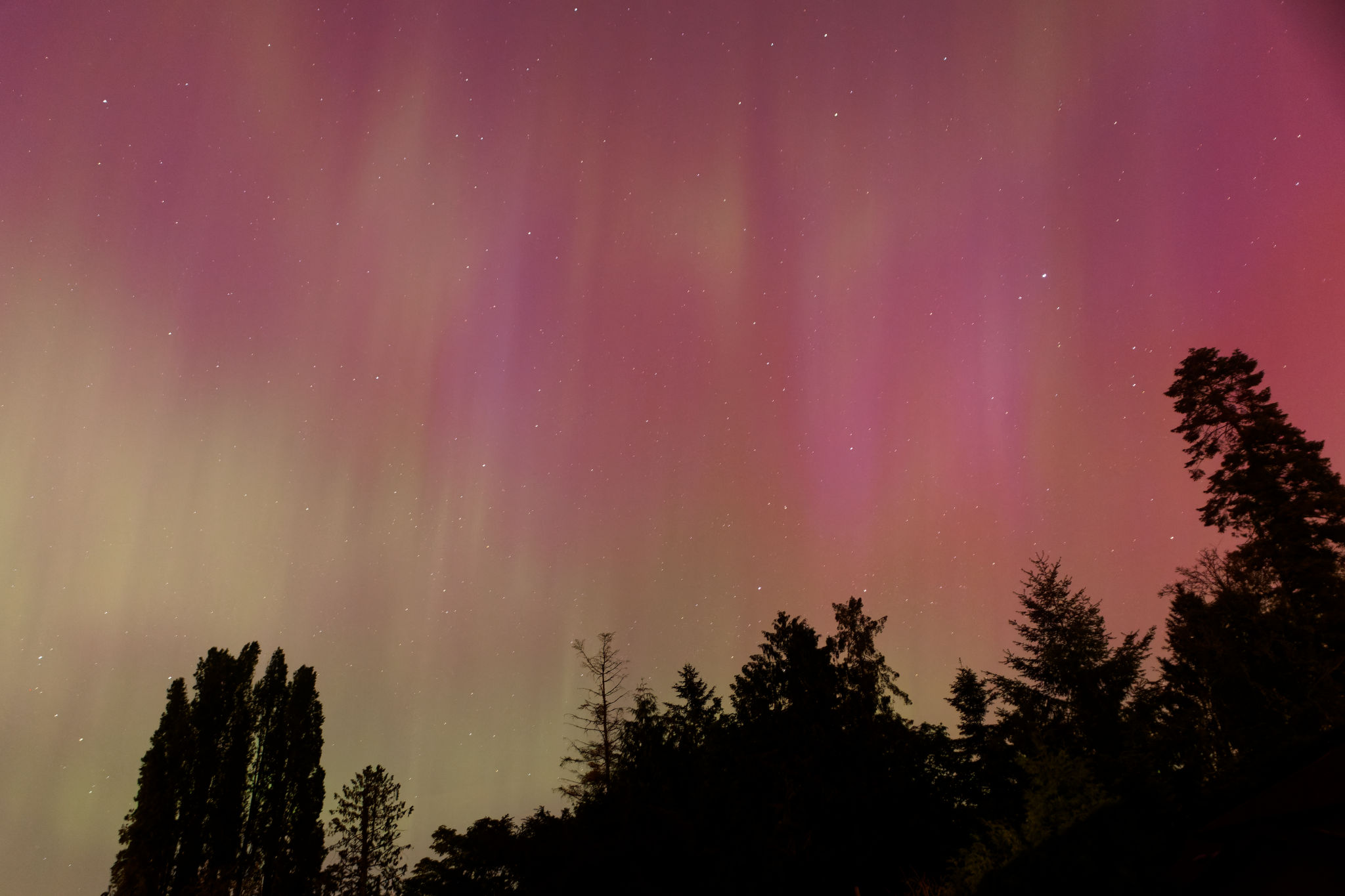
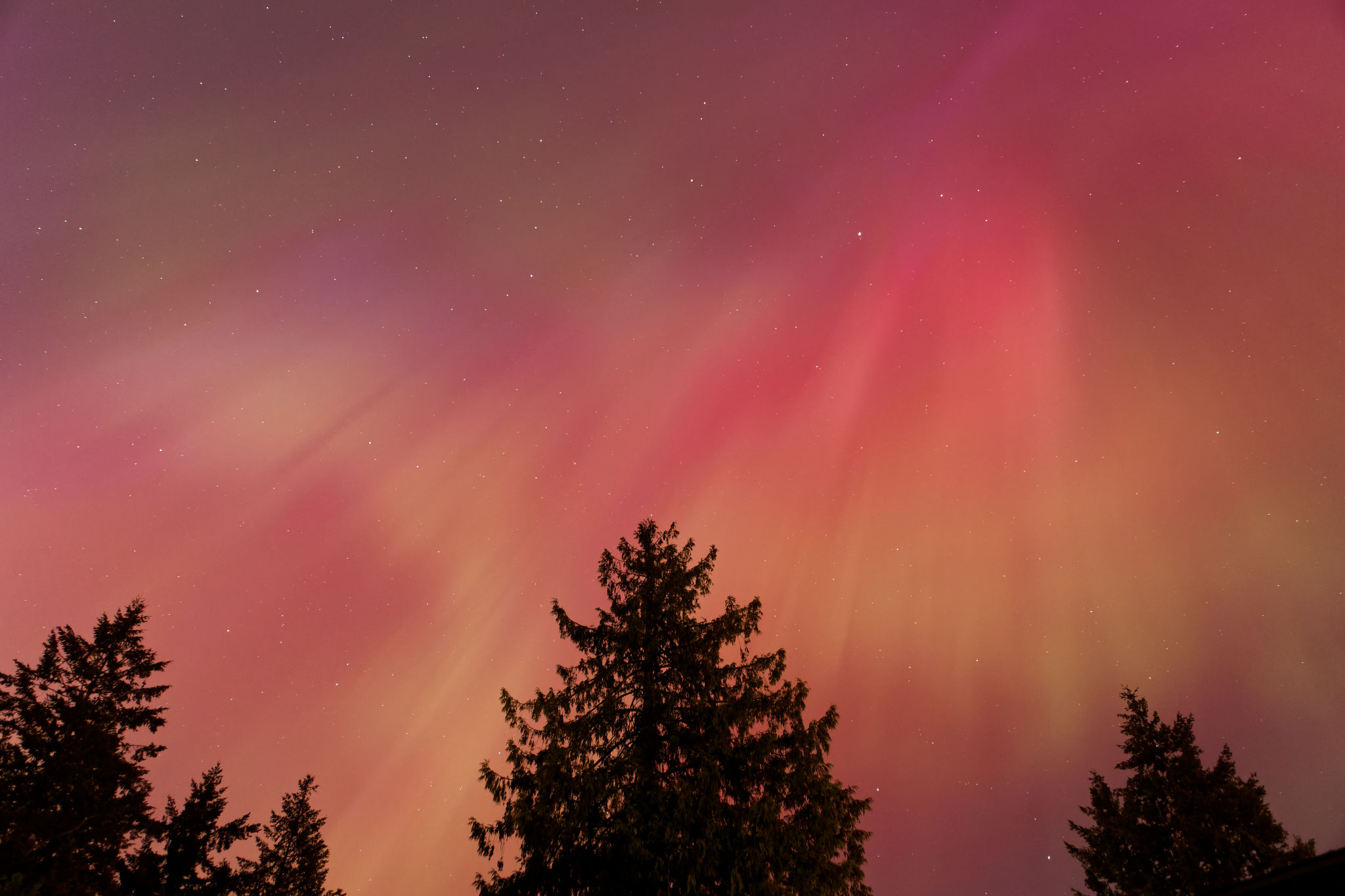


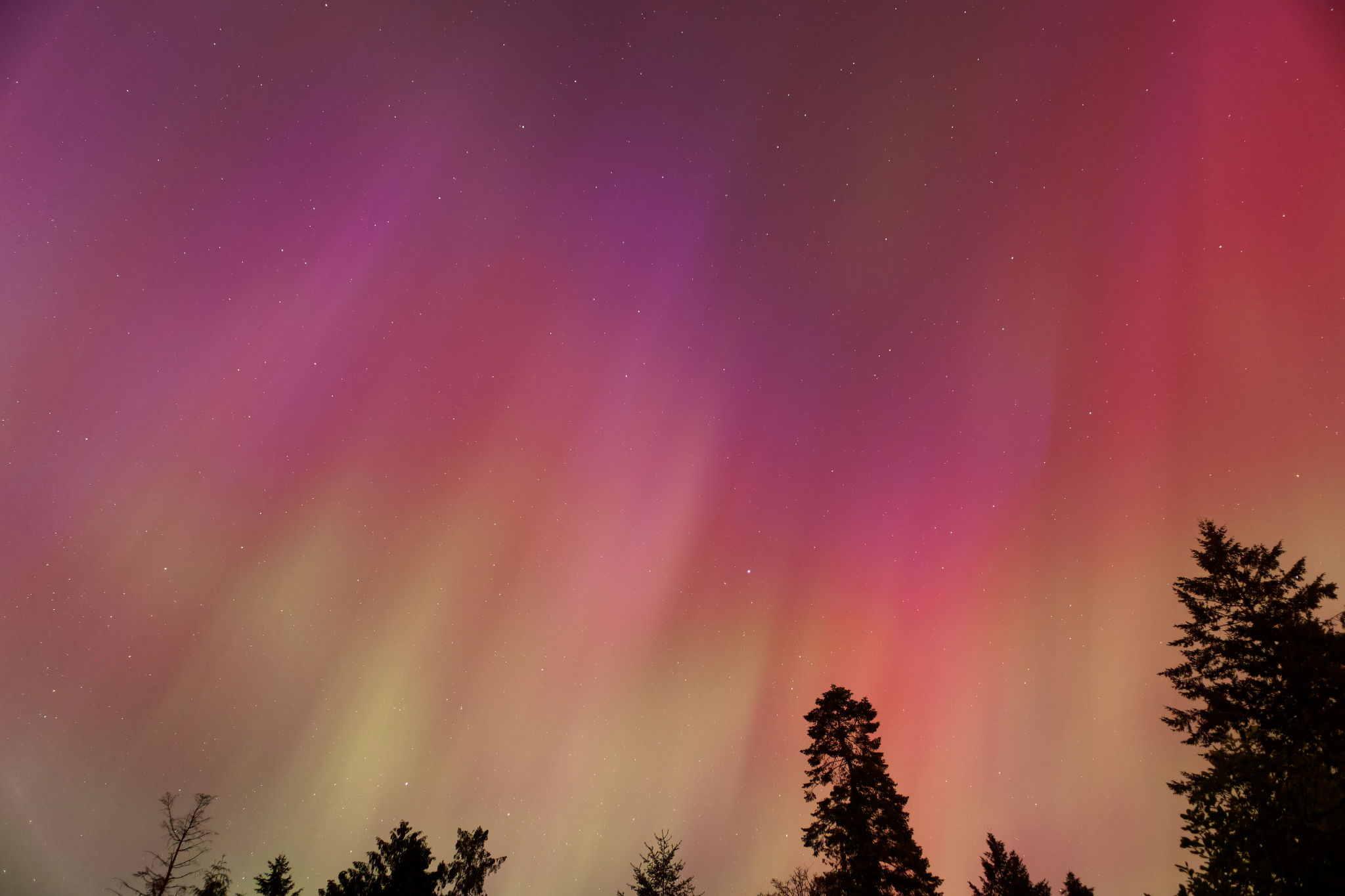
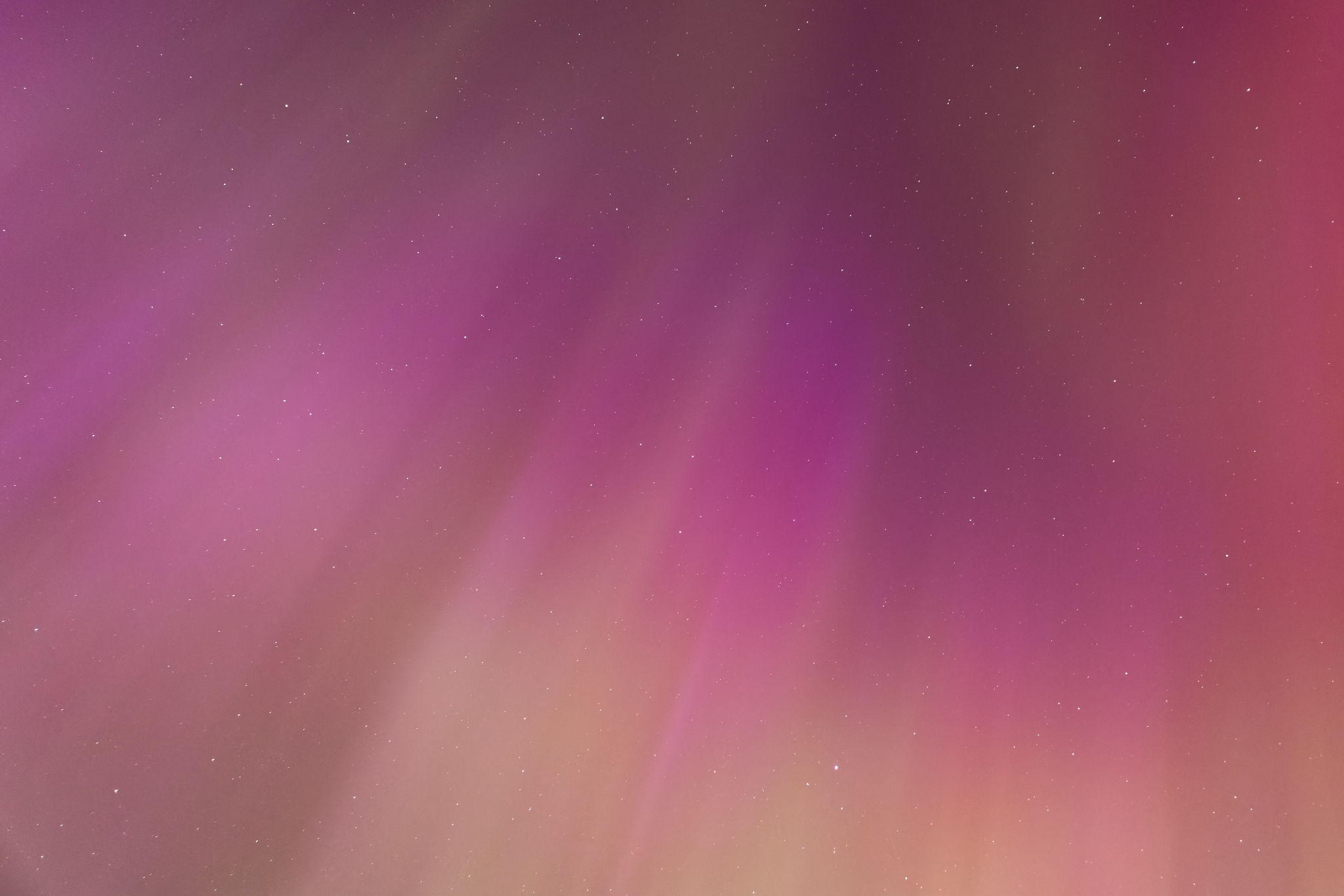

To say we were overwhelmed and in awe is an understatement. Our minds were blown. Well and truly blown. As we settled down to sleep that night it was hard to believe what we had witnessed, and we were glad of the photos to remind ourselves of the spectacle, reliving it over breakfast the next morning.
Creating the photos
A word or two on processing. The photos above all look fantastically colourful but of course it didn’t look like this to our eyes, which picked up only muted colours. The best part about viewing it was being able to see the shapes and patterns change, to watch a shaft streak out in one direction that lasted only for a few seconds, to realize the stars were almost invisible behind the auroral haze. That was the fun part, seeing how dynamic the aurora can be. But I fully acknowledge that anyone expecting to see something that looks like any photo will undoubtedly have been disappointed, especially when we live in a time where saturated, colourful imagery is available at our fingertips every day. On the other hand, many phone cameras are now good enough to pick up the aurora, and with a bit of processing it’s possible to get something that can look quite impressive.
To prove my point, here are a couple of photos from my phone, a Google Pixel 2 from 2018. The Google camera app has a mode called “Night Sight” which takes a number of short exposures and combines them to simulate a longer exposure. It’s not exactly great and is no substitute for being able to set a slower shutter speed, but it’s often good enough and doesn’t need any extra gear such as a tripod. Newer phones can undoubtedly do better than this. These photos were taken hand-held (which is obvious from the star trails), and processed either in Google Photos (JPEG) or Affinity Photo (raw/DNG). Would I have been happy if these were my only record of the aurora? Well, no because I’m more of a perfectionist than that but if photography wasn’t a hobby and I didn’t own a camera, then probably, yes.
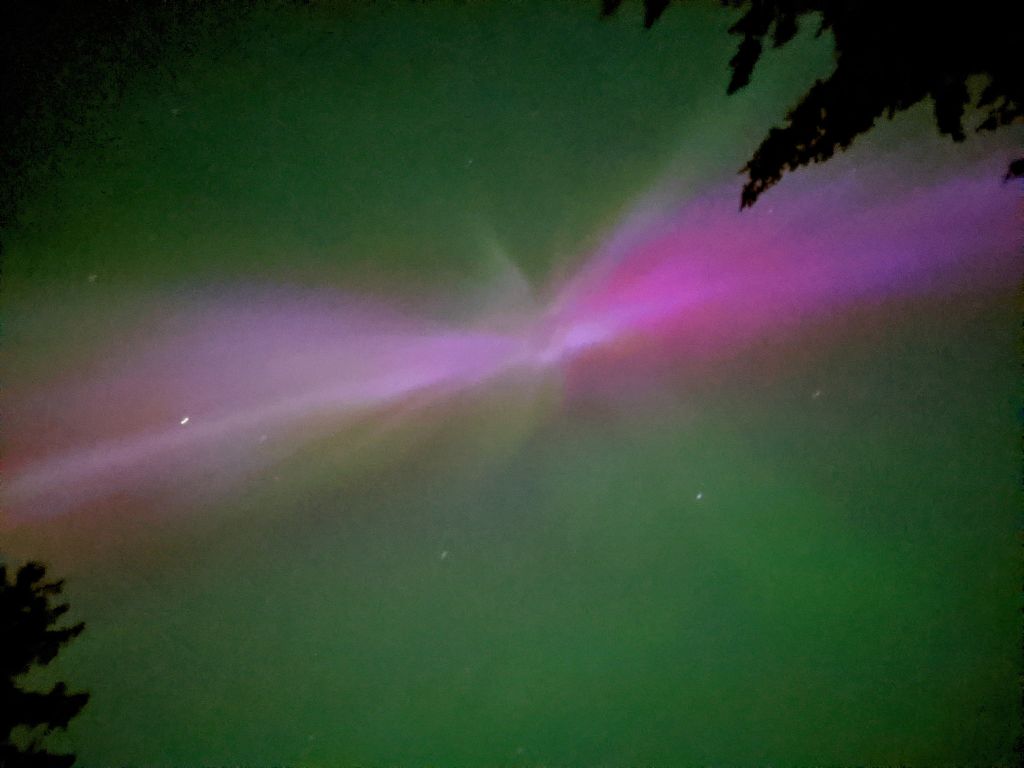


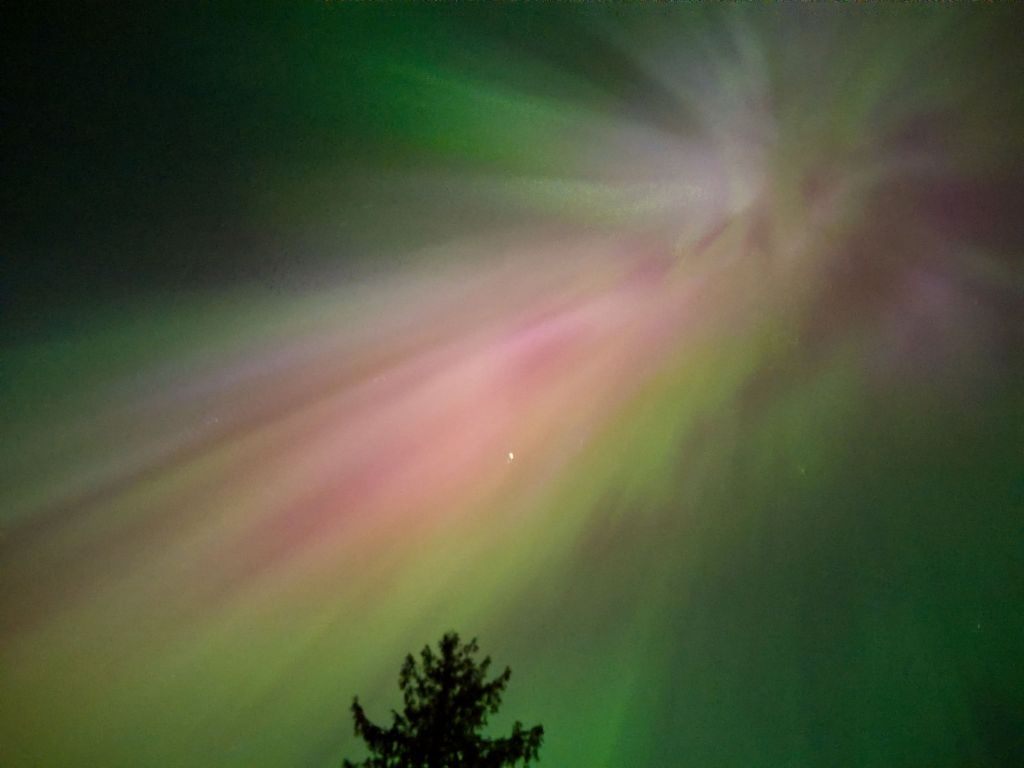
In terms of my processing, I have tweaked the images shown above to make them look good (which is the whole point, right?), boosting the vibrance and saturation just enough to bring out the colour and adjusting the brightness up or down to get something that feels right. Processing can only go so far: if there’s no colour in the file, then no amount of boosting saturation will enliven the photo; my view is that those colours are already in the data and all I’m doing is teasing them out to make a pleasing image.
We’ve come a long way since we saw our first aurora back in 2001. We had a simple point-and-shoot digital camera back then, which I attempted to use to capture some of the colour that was – on this occasion – clearly visible to our eyes. I’ll let you decide if I was successful!

I hope you got to see this amazing display and got some wonderful photos of your own! Let me know what you saw!
We gratefully acknowledge that we had the opportunity to witness the aurora on the traditional, ancestral, and unceded lands of the Á,LEṈENEȻ ȽTE (W̱SÁNEĆ), MÁLEXEȽ (Malahat), and Te’mexw Treaty Association people.

